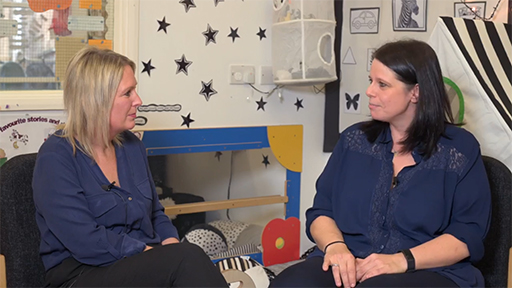1 Manageable and accessible daily physical activity for children
During the previous weeks of the course, you have learned many reasons why it is important to get children physically active, as well as some of the ways that children’s physical growth and development can be promoted. In the following activity you will hear from two practitioners discussing the importance of children being physically active to promote children’s physical health.
Activity 1
Watch Video 2 in which you will hear from Karen and Nicola. They work in a nursery in an area of high deprivation and explain some of the ways they encourage the children they work with to be physically active. As you watch the video, make a note of some of the ideas that Karen and Nicola highlight.

Transcript: Video 2
[TEXT ON SCREEN: 66% of people in Solihull overweight or obese. 17% of Solihull children obese in Year 6. 23% of regeneration area children obese in year 6.]
Discussion
Supporting children’s physical development and being physically active is important not only for their physical health but also for their mental health.
However, as already discussed, each child is unique, therefore, it’s important to take into consideration the individual child and their family situation. For example, in Week 3, it was pointed out that children with Down syndrome often experience delays in their milestones.
There are other factors that can impact how much physical activity children take and how they develop, some relating to health issues that you will look at later this week. Whatever the individual needs of the child are, ways to promote physical activity need to be realistic, so that it becomes part of an enjoyable daily routine for children and their families.
Through embedding manageable and accessible daily physical activity for children, opportunities to be active may become more sustainable. It is also important that practitioners are aware of barriers that may prevent children and their families from being physically active. It is vitally important to work with parents to achieve this goal.
